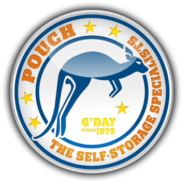-
How to Store Tricky or Special Items
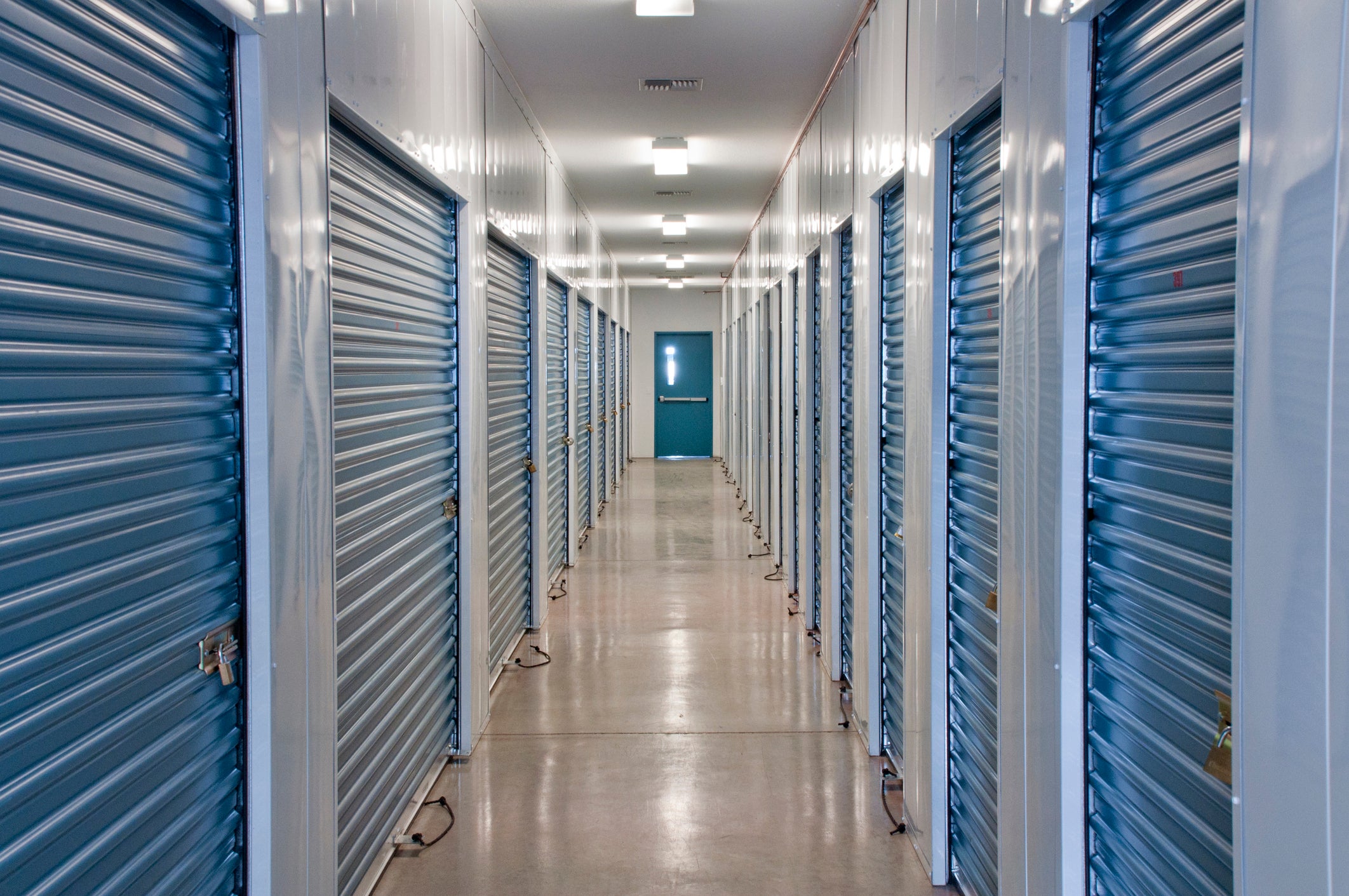
Pouch Self Storage offers tips for storing tricky or special items.
When you’re packing a storage unit, some of the things you’ll put in are self-explanatory. It doesn’t require much thought to stick a storage bin, for instance, onto a shelf in your unit. For items that aren’t as straightforward, we offer these storage tips:
- Jewelry: It’s probably best to avoid storing priceless pieces. If you do need to store valuable jewelry, pack it in a jewelry roll, which can be easily hidden in something larger. For other pieces of jewelry, try these tips:
- Store them as you do at home. If your jewelry is in a jewelry box or armoire, there’s no need to move it and pack it in a different container. Use stretch wrap to secure drawers and open compartments, then wrap the entire jewelry case in padding to protect it.
- If you don’t have a jewelry box at home, organize small items with a pill case. This is a great way to store earrings and wrings. You can also hook earrings through buttons or foam, taping the backs so they won’t slip out.
- Keep items separated. You can use re-sealable kitchen wrap for this, laying the jewelry on half of a piece of wrap and then folding and pressing to keep the items stabilized. You can also wrap pieces in packing paper or store them in zip-top bags, placing these smaller packages into a larger box to store them. Another idea is to use straws to store necklaces, threading each chain through its own straw and clasping it on the outside.
- Batteries: Because they’re important, batteries need to be kept in good working condition. To keep them protected and free from corrosion, store them as follows:
- Take them out of the equipment. Never store batteries inside the equipment they power. When you store them separately, they’ll last longer and be less likely to damage your devices if they leak or corrode.
- Store them somewhere cool and dry. If you’re planning to store batteries, go for a climate-controlled facility. Batteries fare best in a dark, dry place, at room temperature.
- Contain your batteries. Storing them in the original packaging is ideal, but you can also opt for a battery storage box. The most important thing is to keep them from coming into contact with metal, which can cause them to leak or rupture. If you don’t have a box or the original packaging, store batteries by bunching them together with a rubber band and putting them into a plastic bag. When you do this, though, make sure all of the positive ends are pointing in the same direction.
- Keep them separated. Mixing old and new batteries in a device can cause damage to the device or battery leakage, so store old and new batteries separately.
- Store rechargeable batteries correctly. To allow them to gradually discharge, store at 40 percent charge.
- Protect your other belongings from your batteries. Especially if you plan to store them for a long time, keep batteries away from anything that could be damaged by leakage.
- Paintings: Store artwork without devaluing it with these tips:
- Minimize human contact. Wrap it in plastic, protect it with Styrofoam, and pack it into a close-fitting box, filling any space with bubble wrap.
- Store it correctly. Keep the painting vertical and never stack paintings on top of each other.
- Keep it somewhere climate controlled. Store paintings out of direct sunlight, in a place with consistent temperature and moderate humidity.
- Check on your paintings. It’s easy to stick them in storage and not give them another thought, but this is a mistake. Check in on your artwork regularly, watching for any signs of rodents, moisture, or other hazards.
When you’re looking for quality storage space for your special items, choose Pouch Self Storage. We’ve been operating mini-storage facilities since 1979 and we’re committed to keeping our clients’ belongings safe. Founded by John Yelland, who hails from Australia, Pouch Self Storage is named in honor of the kangaroo’s pouch- nature’s safe and secure storage spot. We’re an industry leader in design, building, and maintenance of self-storage facilities, and we strive to give our occupants the most advanced security systems available. At our nine Southern California facilities, you’ll find state-of-the-art computer monitoring systems that allow our self-storage managers to monitor the opening and closing of every storage unit door, 24 hours a day. Currently, we’re abiding by CDC recommendations and implementing social distancing, but you can still reach us by calling (800) 378-4598 or contacting us through our website.
- Jewelry: It’s probably best to avoid storing priceless pieces. If you do need to store valuable jewelry, pack it in a jewelry roll, which can be easily hidden in something larger. For other pieces of jewelry, try these tips:
-
Things to Consider Before Renting a Storage Unit
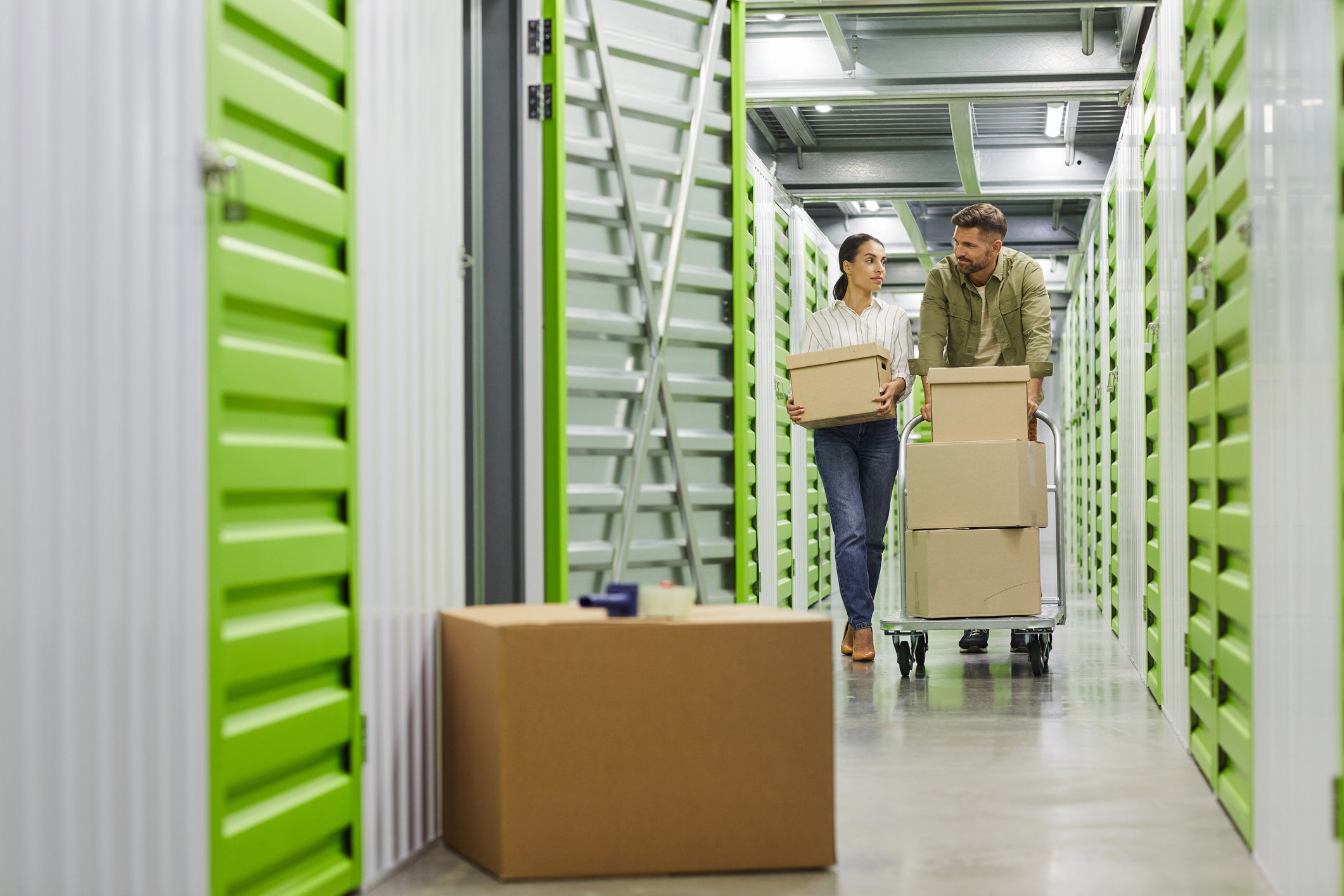
Have you ever rented a storage unit? They’re an excellent solution for storing things either short or long-term, and they’re secure and convenient. If this is your first time renting one, there are some things you should know.
- First, let’s talk about how storage units work, because the process is typically similar regardless of your storage company. You find a storage facility near you, and sign a contract to secure a unit within that space for a specified amount of time. Some companies have a three-month minimum requirement, while most others rent units on a month-to-month basis. You’ll need government-issued ID to rent the unit, like a driver’s license, military ID, passport, or state ID. Read your contract thoroughly before you sign it, so you make sure you’re clear on the terms. For instance, you’ll need to know things like when your payments are due and how much notice you’ll need to give before moving out of your unit.
- Rules for storage units are basically common sense. You can’t live in your storage unit or conduct business there, and you’ll be restricted in terms of what kinds of items you can store. Essentially, nothing hazardous to your unit or the units around you can be stored in a storage unit, nor can anything illegal.
- There are a few different reasons people rent storage units. Some people need seasonal storage of things like holiday decorations or sports gear. Others need temporary storage, during a move or a renovation. Sometimes, people who are decluttering or downsizing need a place to store things, and sometimes when a family member comes to stay for a while, extra space is needed to store what used to be stored in the guest room. College students often store their dorm room furnishings over the summer, and members of the military use self-storage when they’re deployed. People often choose self-storage for a car, boat, or RV.
- Before you rent a storage unit, consider your needs carefully. What do you need to store? Do you need climate control? What size unit do you need? Self-storage units typically come in at least five sizes: 5’x5’, 5’x10’, 10’x10’, 10’ by 15’, and 15’ by 20’. The size you need will be based on how much you need to store, and you can find online calculators to help you estimate the appropriate size.
- Do you need indoor or outdoor storage? Indoor storage units are secured inside a building, protecting your belongings from the elements. These are best for storing clothing, furniture, and anything else you want to protect from extreme temperatures, mold, and mildew. Outdoor storage units are covered and locked, with drive-up access. They’re good for large items and vehicles, but indoor storage is better for anything valuable or fragile.
- Assess the amenities before deciding on a storage unit. How accessible will your storage unit be? Some facilities offer 24-hour access, while others are closed on certain days, like Sundays or holidays. It’s important to find a facility with hours that are convenient for you. You’ll also want to make sure the facility you choose is secure. Is there in-person surveillance? How safe and secure is the facility? Pay attention to the location and the lighting, and make sure you feel safe on the property.
- Prepare your things before you store them. Acquaint yourself with the rules and restrictions about what you can store before you pack up your things. Then take the time to create a detailed list of everything you’re storing. Taking inventory can help you remember what you’ve got in storage, and it can be useful if you ever need to file an insurance claim. Clean all items before placing them in storage, and disassemble furniture to make better use of your storage space. Pack everything carefully in high-quality boxes, cushioning it as you would for a move, and label everything clearly. Place items strategically so that you’ll be able to find things easily and nothing will be damaged.
- Consider insurance. Having your items properly insured will give you the peace of mind that comes with knowing that you’re protected in case of breakage or theft. This does not necessarily mean, though, that you need to purchase storage insurance. While many storage facilities offer affordable self-storage insurance options, you may already be covered by your homeowners or renters insurance.
When you’re ready to rent a self-storge unit, choose Pouch Self Storage. We’ve been operating mini-storage facilities since 1979 and we’re committed to keeping our clients’ belongings safe. Founded by John Yelland, who hails from Australia, Pouch Self Storage is named in honor of the kangaroo’s pouch- nature’s safe and secure storage spot. We’re an industry leader in design, building, and maintenance of self-storage facilities, and we strive to give our occupants the most advanced security systems available. At our nine Southern California facilities, you’ll find state-of-the-art computer monitoring systems that allow our self-storage managers to monitor the opening and closing of every storage unit door, 24 hours a day. For more information, call (800) 378-4598 or contact us through our website.
-
A “Living on the Road” Checklist
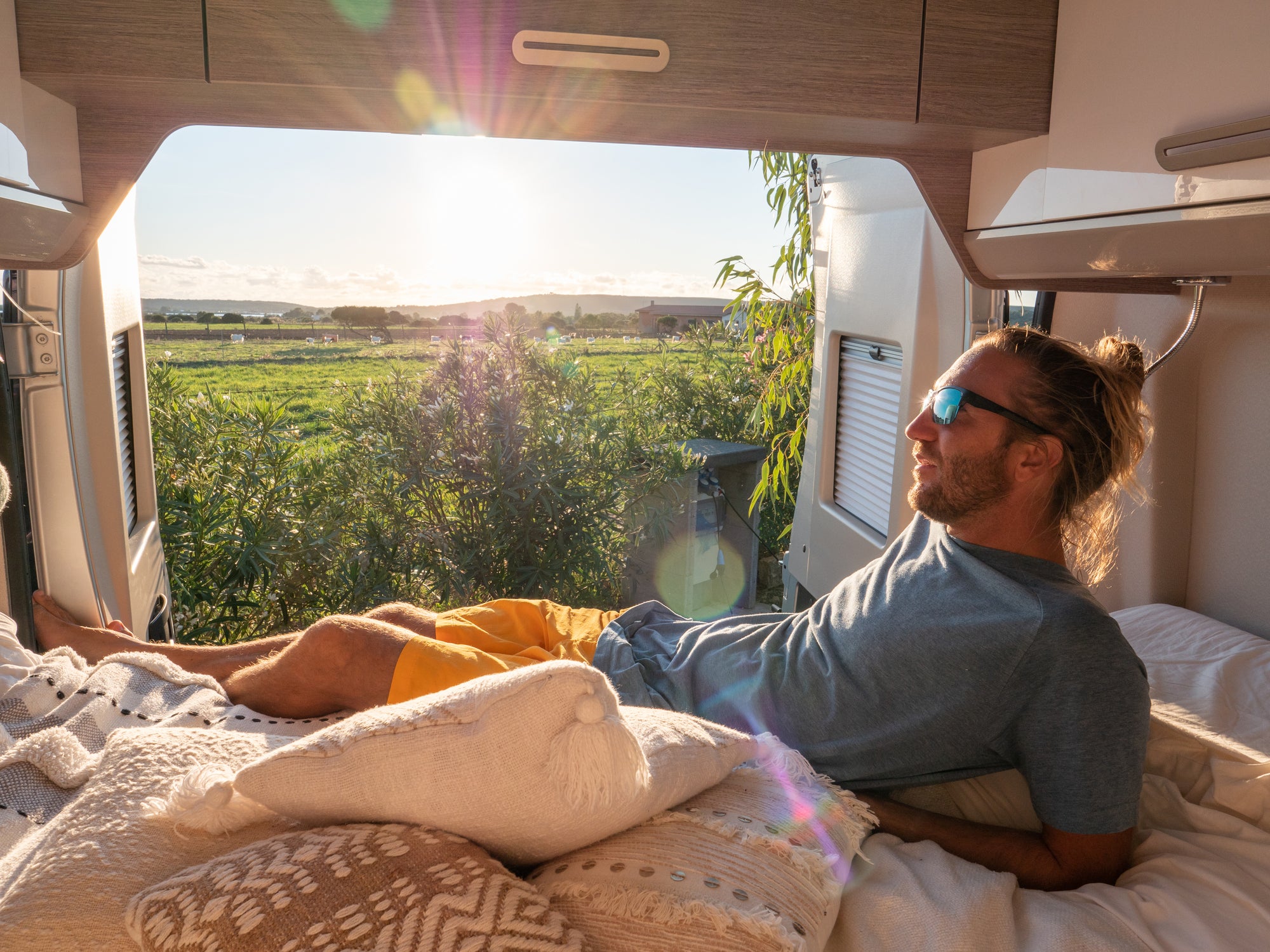
Coming out of the pandemic, many of us are facing a unique and unfamiliar situation. We’ve been in a period of lockdown but have also begun to work remotely. Now that we’re able to move throughout the world more freely, the idea of living on the road seems like an interesting concept. Can you pick up and go, breaking ties with permanent housing in favor of wandering? You might just want to do this for a season, you might want to have an adventure, or you might be considering it as a way of life. No matter how long you intend to do it, the question remains: what will you do with your things?
You might want to give away a lot of your belongings, but there are certainly some things you won’t want to part with. For those items, self-storage is an excellent option. What will you take, and what will you leave behind? Here’s a list of some things you’ll want to bring along on your travels.
- Clothing: No matter what kind of weather you expect, it’s smart to keep a few jackets, hoodies, or sweaters with you in case it gets chilly. You’ll also want to take a bathing suit, because you never know when you might get the opportunity to swim. Beyond that, you really only need a few outfits. Streamline your wardrobe, giving away or selling the things you no longer want to keep, and storing what you love but don’t currently need. Travel light and keep the bulk of your wardrobe readily accessible in your storage unit.
- Medications: Have a plan for managing your prescriptions while you’re away. Take over-the-counter medications with you- in most places it’s illegal to store medication in a storage unit.
- Money: Managing your money is another thing that requires a plan while you’re away. If you don’t already have online banking, now is the time to set it up. Take some cash along with you on the road, but not enough to attract thieves. There’s no reason to store money in a storage unit, but financial records and other important paperwork can safely be stored.
- Electronics: For the most part, you can store your electronics in a self-storage unit. Take care to choose a unit that’s climate control if you’re going to go this route. Of course, there are some electronics you’ll need on the road, especially if you plan to work remotely. Make sure you have enough adaptors and chargers to keep your electronics powered up, and check with your storage provider to determine if there are any limitations on things like batteries.
- Furniture and Linens: It can be tempting, when you’re streamlining your lifestyle, to sell all your furniture. Don’t do it! There will come a time when you’ll need furniture, and you won’t want to have to buy it all again. Give away things you don’t like but store the majority of your pieces. Store much of your bedding and other linens, too, but keep out two of everything so that you can use one and wash one.
- Entertainment: Less is more in this arena, especially if you’re traveling abroad. Digitize your favorite music and carry it with you but leave the television behind in storage. Instead of bringing books, consider an e-reader. Bring a deck of cards, and if you play an instrument that is portable, bring that too. Part of the adventure is being in the moment, so you don’t need a wealth of distractions.
- Miscellaneous Must-haves: This will vary from person to person, but a few items that are good to have include a first aid kit, a blanket, and baby wipes. Bring along plastic bags; they’ll serve a variety of purposes. If you’re taking a vehicle, bring spares and tools in case of emergency, and pop a shovel into your trunk. Of course, in the current environment it’s a good idea to bring along hand sanitizer and masks, as well.
Now that you know what you’ll need out on the road, turn to Pouch Self Storage to store the rest of your things. We’ve been operating mini-storage facilities since 1979 and we’re committed to keeping our clients’ belongings safe. Founded by John Yelland, who hails from Australia, Pouch Self Storage is named in honor of the kangaroo’s pouch- nature’s safe and secure storage spot. We’re an industry leader in design, building, and maintenance of self-storage facilities, and we strive to give our occupants the most advanced security systems available. At our nine Southern California facilities, you’ll find state-of-the-art computer monitoring systems that allow our self-storage managers to monitor the opening and closing of every storage unit door, 24 hours a day. Currently, we’re abiding by CDC recommendations and implementing social distancing, but you can still reach us by calling (800) 378-4598 or contacting us through our website.
What You Can’t Store in Self-Storage
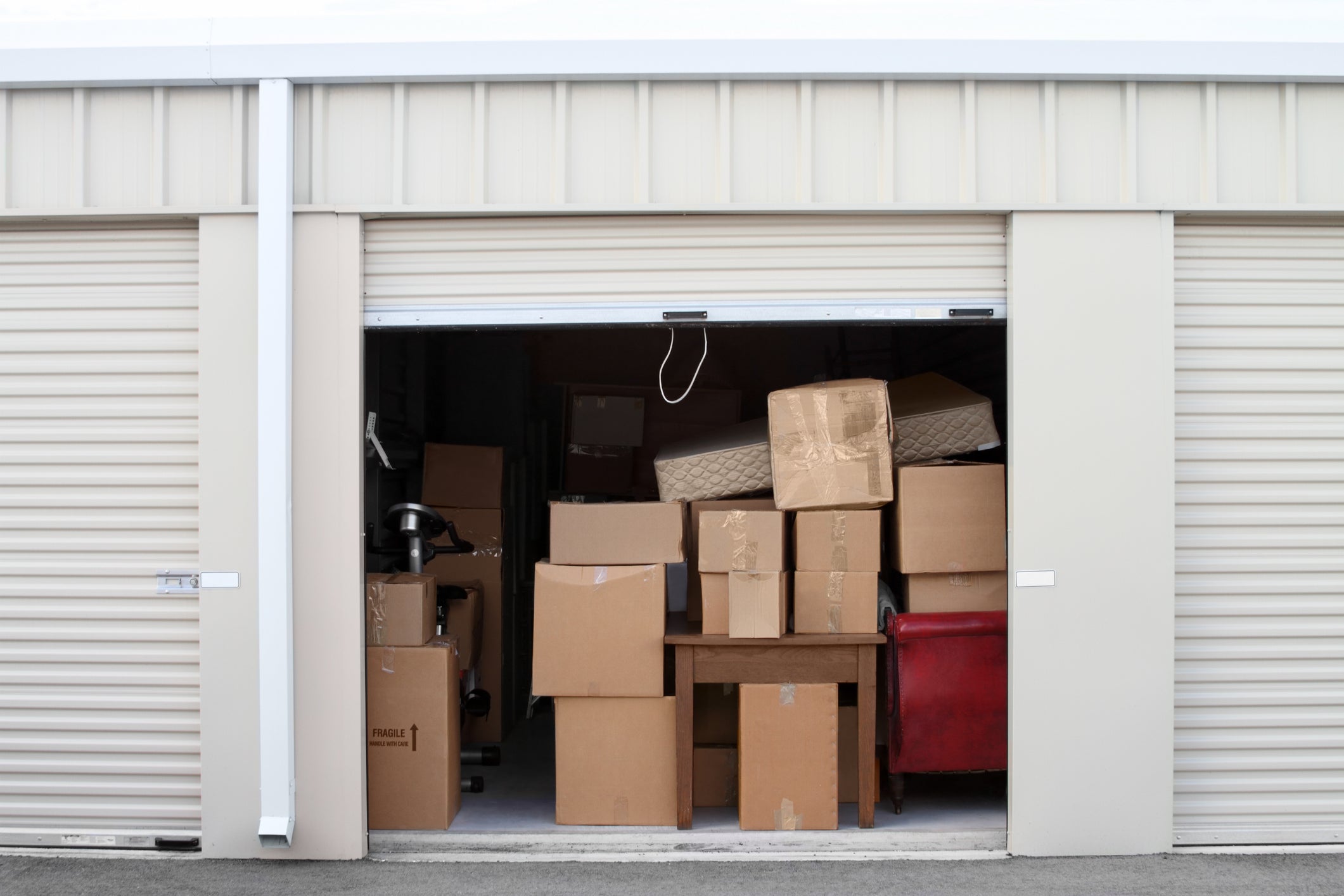
Self-storage is convenient, creating extra space for your belongings. A storage unit is a great place to store seasonal items or to keep your things temporarily while you’re relocating. There are some things, however, that should absolutely never be kept in self-storage.
There are some crazy stories out there of people storing outlandish items that would never occur to most of us. A doctor storing brains in jars, a man storing his amputated leg, and another man who kept his deceased grandmother in a coffin in his storage unit are just a few of the wilder tales of misused storage space. There have also been stolen goods found in storage unit, and one man decided to store his aquarium full of fish, with predictably disastrous results. In most cases, however, people store the wrong items because they simply didn’t realize they weren’t permitted to do so. How well do you know the rules? Check your knowledge against this list of self-storage “don’ts.”
- Don’t store anything that can catch fire or explode. Seriously, please don’t. Gasoline, propane, oil, grease, chemicals, cleaners, and paint can all catch fire, destroying your belongings as well as things that belong to other people. Fireworks, explosives, and dangerous chemicals are absolutely prohibited from self-storage.
- Don’t store anything toxic. Chemicals, fertilizers, and cleaning products can all cause problems when their fumes mix. Don’t store anything poisonous or contagious, either, and absolutely no bioweapons.
- Don’t store non-operational, unregistered, or uninsured vehicles. You’re only allowed to store vehicles that are registered, insured, and functional. If you move your boat, RV, trailer, motorcycle, car, or truck into storage, you’ll be asked to present proof of registration and your driver’s license.
- Don’t store anything illegal. This includes stolen goods and illegal drugs. We have security cameras recording video evidence of the things you place in your storage unit. Why wouldn’t we turn you in and get the reward? Also, it’s easy for law enforcement to obtain a search warrant for your storage unit. Just don’t do it.
- Don’t store anything weapon-related. Well, if you want to store your back issues of Guns and Ammo magazine, that’s ok, but weapons, ammunition, and bombs are definitely not. Don’t store your flame throwers, hand grenades, land mines, mortar shells, bazookas- well, you get the picture. Don’t store anything that might lead the FBI or ATF to believe you’re up to no good.
- Don’t store perishable items. Food items that require refrigeration obviously don’t belong in a storage unit. Neither do food items in bags and improperly-sealed containers. All of these things can cause trouble with mold and bacteria, as well as attracting vermin. What might surprise you is that canned goods cannot be kept in storage units. Especially in units that aren’t climate controlled, they can explode.
- Don’t store live plants in your storage unit. Not only is this a great way to attract bugs to the storage unit, but it’s also a terribly unkind thing to do to a plant! Plants need sunlight to live, so if you can’t take them with you, give them to someone who will care for them.
- Don’t store anything wet or even damp in self-storage. You’re welcome to store your beach toys, surfboards, and even scuba gear, excluding the tanks because, as stated previously, you can’t store things that might explode. The catch is that you have to dry all these things thoroughly before you put them away. Storing anything with moisture in a storage unit invites the growth of mold and mildew, which no one wants.
- Don’t store yourself or your pets. This may seem obvious and like something you’d never do, but people have been known to try living in a storage unit from time to time. This isn’t a great idea for many reasons, but one reason is that we have security cameras everywhere! Your things will be safe and secure, but a storage space is a terrible place to hide out.
Now that you know what you shouldn’t put in self-storage, bring the things you do want to store to Pouch Self Storage. We’ve been operating mini-storage facilities since 1979 and we’re committed to keeping our clients’ belongings safe. Founded by John Yelland, who hails from Australia, Pouch Self Storage is named in honor of the kangaroo’s pouch- nature’s safe and secure storage spot. We’re an industry leader in design, building, and maintenance of self-storage facilities, and we strive to give our occupants the most advanced security systems available. At our nine Southern California facilities, you’ll find state-of-the-art computer monitoring systems that allow our self-storage managers to monitor the opening and closing of every storage unit door, 24 hours a day. For more information, call (800) 378-4598 or contact us through our website.
How Can You Organize your Storage Unit for Frequent Access?
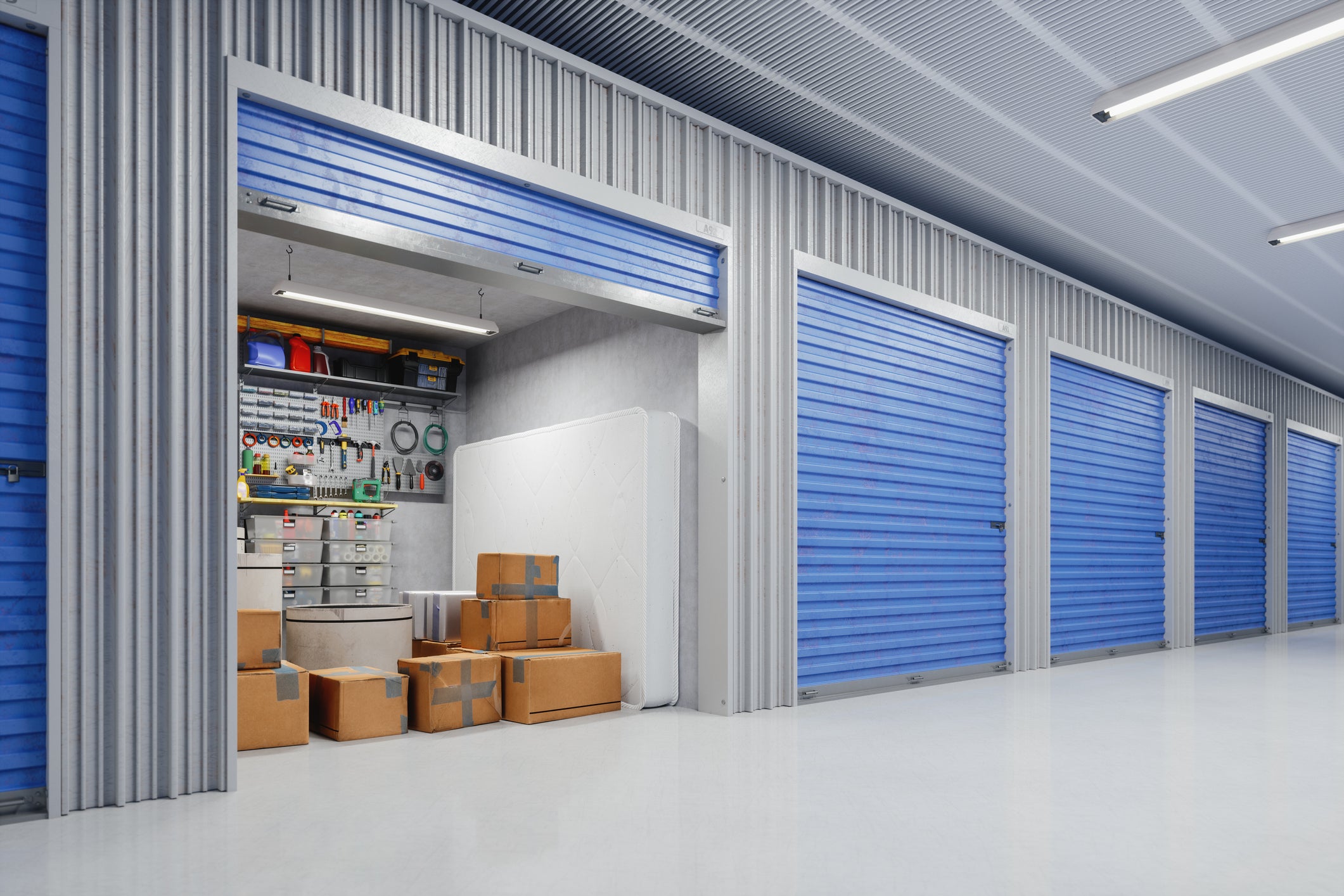
A storage unit is a convenient place to store things you have no room for at your home. If you need to access your items frequently, though, you’ll have to spend some time organizing it. Here, we offer some tips for keeping your storage unit organized, functional, and easily accessible.
- Create a well-organized inventory list. It’s great to diagram your space and document every item in your storage unit, but the most important thing is to find a system that works for you. Consider the things you’ll need to access frequently, and keep an accurate list detailing where those items are located. If you’re storing personal items, things you might need to retrieve easily include seasonal clothing, camping gear, tools, and holiday decorations. If you’re a business storage customer, you may need to access extra inventory, office supplies, documents, or marketing material. Keeping a list on paper or a spreadsheet on your computer will help you keep track of everything you need.
- Carefully plan your layout. Before you put anything in the storage unit, use the exact dimensions of the unit to plan for the best use of the space. Think about how often you’ll visit the unit and which items you’ll need most frequently. Try to create paths to facilitate easy access, with large items like furniture against the walls and the things you’ll access most often facing the path so you can easily retrieve them.
- Use organizational furniture to make the most of your space. Invest in shelving, and you’ll be able to maximize your vertical space. Sturdy metal, wood, or plastic units are extremely useful, and can easily hold large or oddly shaped items that might not fit in boxes. If you use shelves higher than you can easily reach, keep a step ladder in the storage unit.
- Choose clear plastic bins instead of cardboard boxes. Cardboard boxes are cheap and convenient, but for things you need frequently, it’s better to use plastic bins so you can easily identify what’s inside. Clear plastic bins are also easy to stack and store.
- Lift your belongings with pallets. When you use wood or plastic pallets you can keep your boxes and furniture off the ground. This is particularly important if you’re storing items that are vulnerable to moisture.
- Be specific with your labeling. When you are creating your inventory list, make note of where things are stored. List all of the items on the boxes, too, so that you’ll be able to find specific items quickly. It can be helpful to number the boxes on top and at least one side so that you can easily locate the box you need.
When you’re looking for a place to safely store your belongings, choose Pouch Self Storage. We’ve been operating mini-storage facilities since 1979 and we’re committed to keeping our clients’ belongings safe. Founded by John Yelland, who hails from Australia, Pouch Self Storage is named in honor of the kangaroo’s pouch- nature’s safe and secure storage spot. We’re an industry leader in design, building, and maintenance of self-storage facilities, and we strive to give our occupants the most advanced security systems available. At our nine Southern California facilities, you’ll find state-of-the-art computer monitoring systems that allow our self-storage managers to monitor the opening and closing of every storage unit door, 24 hours a day. Currently, we’re abiding by CDC recommendations and implementing social distancing, but you can still reach us by calling (800) 378-4598 or contacting us through our website.
Safety Tips for Self-Storage
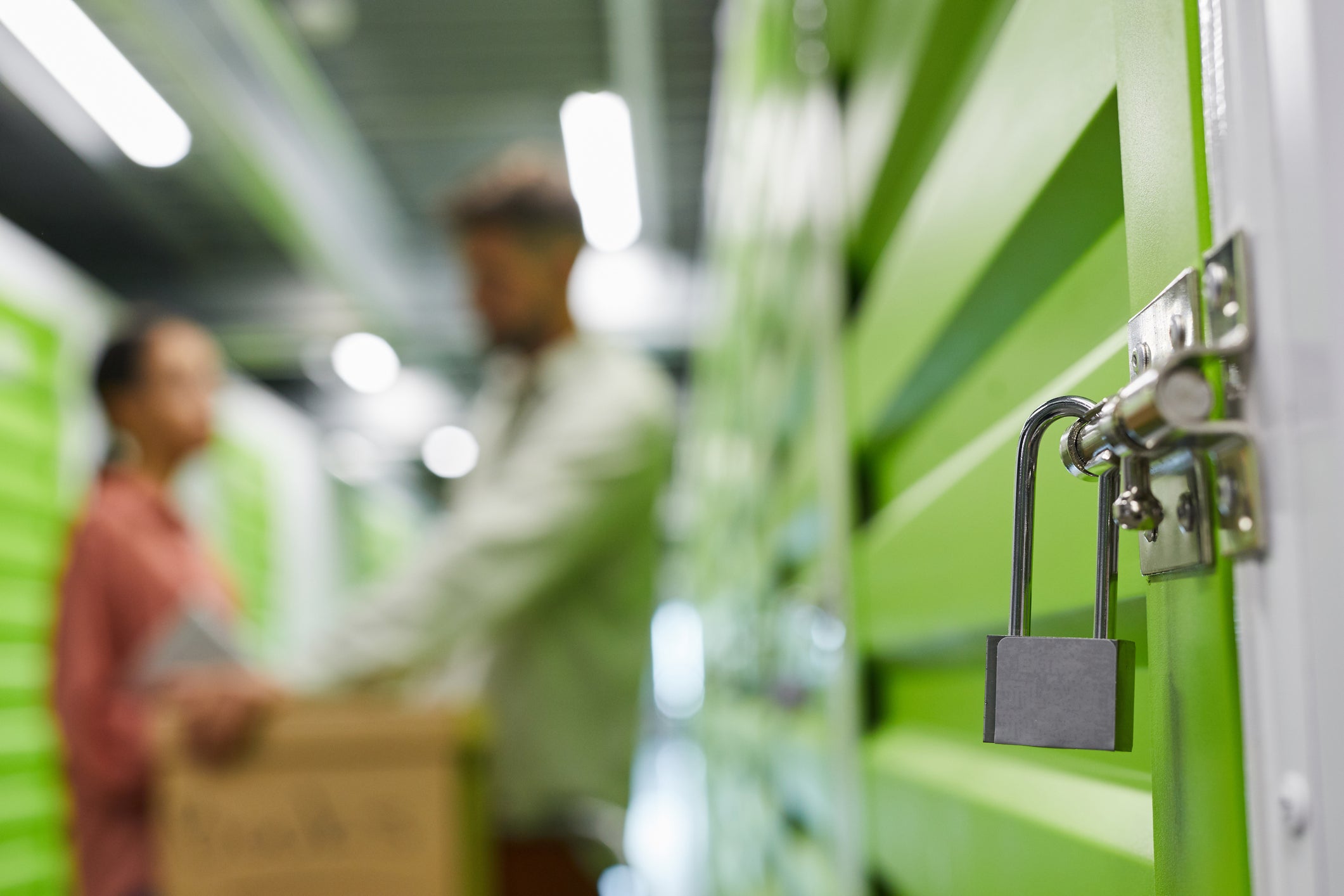
When you’re storing your belongings, you want them to be as safe as possible. It’s important to find a storage facility with security measures in place but in reality, security is a team effort. Here are some tips to help ensure your things stay safe while they’re in self-storage.
- Buy the best lock possible. If there is a breach in the security of your storage facility, the thieves will go after cheap locks that are easy to remove. Choose a lock that’s resistant to tampering and bolt cutters, preferably a disk or cylinder lock.
- Know what’s safe to keep in a storage unit. Some items are restricted from a storage unit, like flammable things and food. However, there are other things that common sense dictates you shouldn’t store, like cash and fine jewelry that won’t be covered by insurance in case of a loss. Ask for guidance from the facility’s management as well as your insurance company before storing something questionable.
- Keep an up-to-date inventory list. In the future, you might forget exactly what is in your storage unit and where. Keep a detailed list of what you’re storing, along with clear, well-lit photographs. Update the list if you remove things to keep it accurate, and if there’s ever a theft, you’ll be able to provide details to the insurance company about exactly what was taken.
- Choose an indoor unit for an extra layer of protection. A unit that’s inside a storage building will be better protected than one outside, because the buildings usually require keypad access.
- Don’t share your access card or key. Often, thefts are the result of a friend, family member, or acquaintance accessing your storage unit. Keep the items you’re storing and your access information secret except from those who you trust completely.
- Buy the insurance, even if you’re not required to do so. Some storage facilities require insurance. Even if yours does not, purchasing insurance is the best thing you can do to protect your belongings. Your homeowners or renters policy might cover items in storage; if it doesn’t, you’ll need a storage insurance policy. Review your policy carefully so you’ll understand exactly what is and is not covered.
- Pick the right facility. The best way to keep your things safe is to choose a facility with good security. The facility should have a digital surveillance system that operates 24 hours a day as well as password protected access at the gates and doors. It should also be well-maintained and properly lit, with employees who are well-trained and responsive.
When you’re looking for a safe and secure place to store your belongings, choose Pouch Self Storage. We’ve been operating mini-storage facilities since 1979 and we’re committed to keeping our clients’ belongings safe. Founded by John Yelland, who hails from Australia, Pouch Self Storage is named in honor of the kangaroo’s pouch- nature’s safe and secure storage spot. We’re an industry leader in design, building, and maintenance of self-storage facilities, and we strive to give our occupants the most advanced security systems available. At our nine Southern California facilities, you’ll find state-of-the-art computer monitoring systems that allow our self-storage managers to monitor the opening and closing of every storage unit door, 24 hours a day. Currently, we’re abiding by CDC recommendations and implementing social distancing, but you can still reach us by calling (800) 378-4598 or contacting us through our website.
How to Pack Efficiently
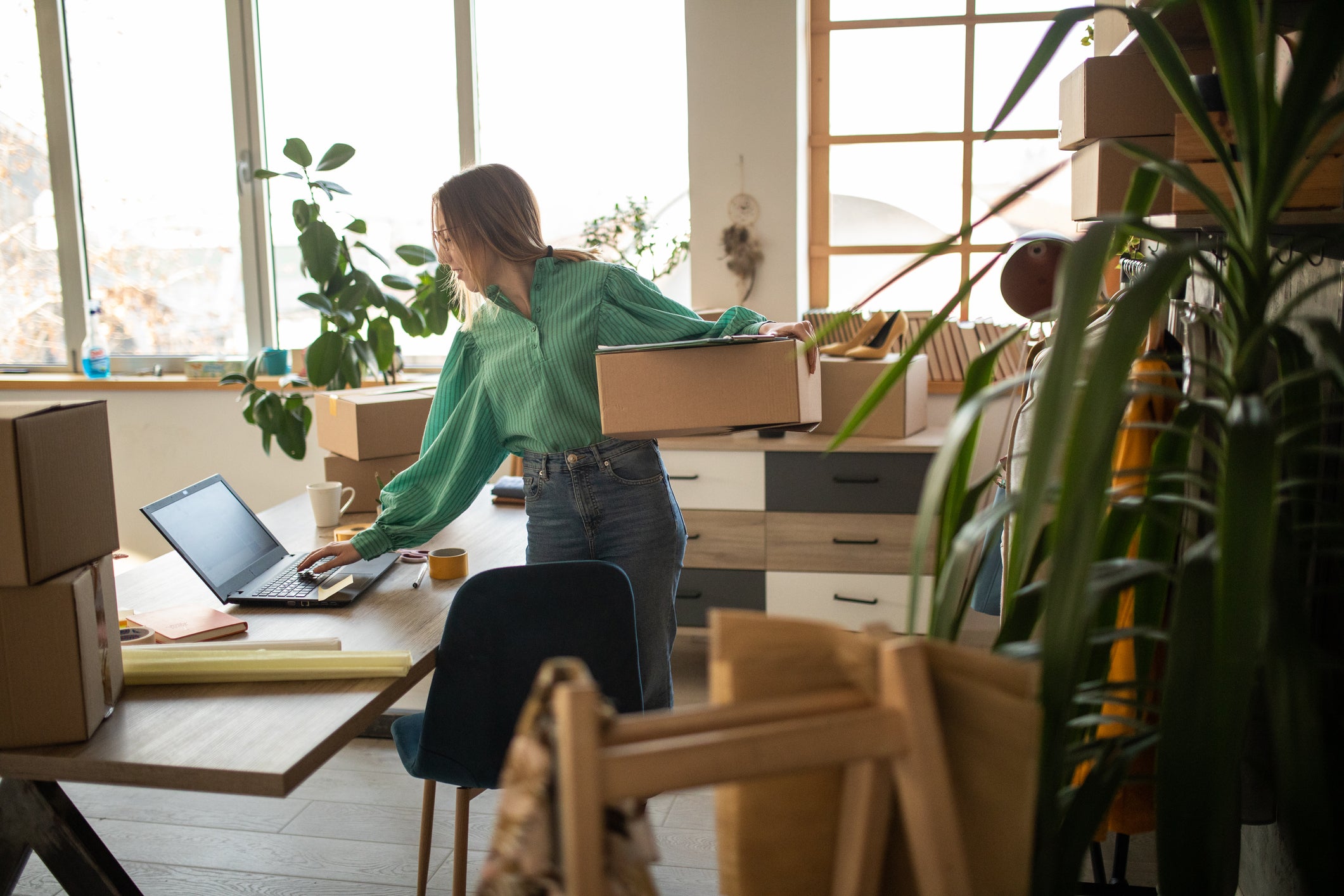
A storage unit is a convenient option, especially if you’re moving and need a place to temporarily store some of your things while you unpack. However, if you want your things to be in good condition when you retrieve them, it’s important to be careful about packing them. Follow these tips for packing efficiently and well.
- Know what you can and cannot store. The storage facility is likely to provide you with a list of rules, regulations, and restricted items. If you don’t receive one, ask for it. You won’t be allowed to store dangerous or flammable items, or perishable food, medicine, or plants.
- Decide what you need to store. Don’t store things unnecessarily, because storing a lot of items means you’ll need a large storage unit, which means more money. Before you store, clear the clutter and give away, sell, or donate anything you don’t need to keep.
- Keep a detailed inventory. It’s easy to lose track of what’s in your storage unit if you don’t have an inventory list. It may be helpful to print two lists, keeping one with you and one in the storage unit so you’ll have it on hand when you’re looking for things you need.
- Pack only clean items. It’s disheartening to retrieve items from your storage unit, only to discover they’ve deteriorated because they were put away dirty. Before you pack your things away, wipe everything down with an all-purpose cleaning spray, vacuum upholstered furniture, and clean out appliances. When you get them out of storage later, your items will be in good condition, and they won’t have any unpleasant odors.
- Use clear plastic storage bins. Storing your belongings in clear plastic bins makes it easier to find them when you need them. What’s more, airtight bins will help protect your items.
- Label everything. Labels that clearly describe the contents of boxes make things easier to find, especially if you opt for cardboard boxes over plastic bins. Be specific, listing exactly what’s in the box instead of a generic category like “kitchen items.”
- Protect your items. Especially if your unit isn’t climate controlled, take care to prevent damage to the items you’re storing. Make sure everything is dry, apply protective spray to furniture and leather goods, and seal boxes to keep out moisture. Store electronics and cords in plastic bags, pack clothing in wardrobe boxes or in hanging garment bags, place mattresses in storage bags, and cover furniture with a cotton sheet to keep pests and bad weather from damaging it.
- Prepare large items properly. Take large pieces of furniture apart before storing them, and store box springs and mattresses flat. Leave washers, dishwashers, and refrigerators slightly open to prevent mold and mildew, and wrap small appliances in bubble wrap or foam to protect them.
- Have a plan when placing things into the unit. Pack your unit strategically, placing large and heavy items on the bottom of the unit. Don’t store mattresses under heavy things to prevent damage. Keep things you’ll need to access frequently near the door or somewhere else where you can easily retrieve them. Use good quality packing supplies and the best lock you can afford.
Once your things are packed and you’re looking for a good place to store them, choose Pouch Self Storage. We’ve been operating mini-storage facilities since 1979 and we’re committed to keeping our clients’ belongings safe. Founded by John Yelland, who hails from Australia, Pouch Self Storage is named in honor of the kangaroo’s pouch- nature’s safe and secure storage spot. We’re an industry leader in design, building, and maintenance of self-storage facilities, and we strive to give our occupants the most advanced security systems available. At our nine Southern California facilities, you’ll find state-of-the-art computer monitoring systems that allow our self-storage managers to monitor the opening and closing of every storage unit door, 24 hours a day. Currently, we’re abiding by CDC recommendations and implementing social distancing, but you can still reach us by calling (800) 378-4598 or contacting us through our website.
Tips for Moving with Pets
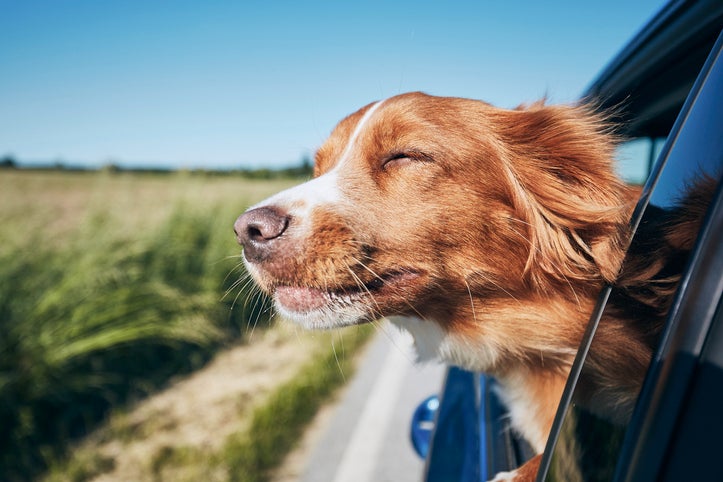
Moving to a new place can be a fun adventure, but it can also be stressful. When your family includes furry, feathered, or finned friends, it can sometimes get complicated. Here, we offer some tips for keeping your pets safe and calm during your move.
- First, get them used to the idea of traveling before you do it. Start by acclimating your pets to their crates by putting them into the crates for short periods of time at home. Then move on to the next step, of putting the crates in the car and sitting there without going anywhere. Next, sit with the engine on, then drive around the block so they can get used to the movement of the car. If you’re flying, you clearly won’t be able to practice taking them on a plane. However, practicing with the crates and the car can make them more comfortable once the time comes to travel. You might also consider a professional pet mover who will know how to safely move your pets across the country or even across the world, adhering to any local or regional regulations.
- Keep your pets safe while you pack. Make them a “safe space” in the house, with familiar items and crates or beds so they’ll feel comfortable and protected. Pets notice when their home is being packed up, and they may feel distressed when you are packing, but having a safe place to hide will make them feel safer.
- Communicate with your vet. Schedule an appointment for each of your pets so that you can make sure they’re up to date with vaccines and checkups before you leave. Ask your vet for tips on keeping your pets calm during the move, and if you’re moving to another area, ask for recommendations for a new vet. Get copies of your vet records and fill any prescriptions for your pets before you move.
- Pack an overnight kit for your furry family members. Just as you’ll pack a bag for each of your human family members with things they’ll need in the first few days at the new place, pack for your pets. You’ll need to include dog food, kitty litter, toys, grooming tools, and anything else your pets will need to feel comfortable while you’re unpacking and settling into your new home.
- Make sure your pets are out of the way on moving day. Preferably, have them boarded somewhere or ask a friend to take them for the day. If that’s not possible, close them into a room where they’ll be safe during all the commotion. That’s another time in which their safe space will be helpful. Put a note on the door letting people know which pets are in the room, so that no one opens the door. Pets can be stressed out by all the action of moving day, and they can also get underfoot and potentially be hurt. Worse, a panicky pet could bolt through an open door and get lost.
- Special pets require special care. The above tips primarily apply to cats and dogs, but what about other pets? Small animals require some special care when you’re moving.
- Guinea Pigs: Guinea pigs are sensitive and don’t do well when they’re jostled around. Their hearts are easily damaged, so if you must transport guinea pigs, make sure they’re carried in something small, warm, and comfortable.
- Fish: Moving with fish is not a very good idea, because they’re easily traumatized and moving can sometimes be fatally stressful for them. If you’re moving a short distance, you may be able to transport them in bags filled with water from their old tank. However, if you’re moving across the country, you’re better off rehoming your fish, emptying your tank, and getting new fish in your new home.
- Birds: Even if your bird is normally free-range and sits on your shoulder contentedly, the move is one time for a bird cage. Even the smartest parrot can get jittery and nervous during a move, and you don’t want your feathered pal to fly away.
- Plan a few days off to help your pets adjust. Spend some time helping them get back into their normal routine while adjusting to their new home. Recreate your pets’ safe space in the new home, and keep them contained until you’ve moved all your things into the house. Introduce them to the new environment slowly, giving them plenty of positive attention. Get collar tags with your new address as soon as you can in case a pet slips out of the house.
While you take care of your family and pets, trust Pouch Self Storage to keep your belongings safe. Founded in 1979 by John Yelland, who hails from Australia, Pouch Self Storage is named in honor of the kangaroo’s pouch- nature’s safe and secure storage spot. We’re an industry leader in design, building, and maintenance of self-storage facilities, and we strive to give our occupants the most advanced security systems available. At our nine Southern California facilities, you’ll find state-of-the-art computer monitoring systems that allow our self-storage managers to monitor the opening and closing of every storage unit door, 24 hours a day. Currently, we’re abiding by CDC recommendations and implementing social distancing, but you can still reach us by calling (800) 378-4598 or contacting us through our website.
How to Get Rid of Fruit Flies
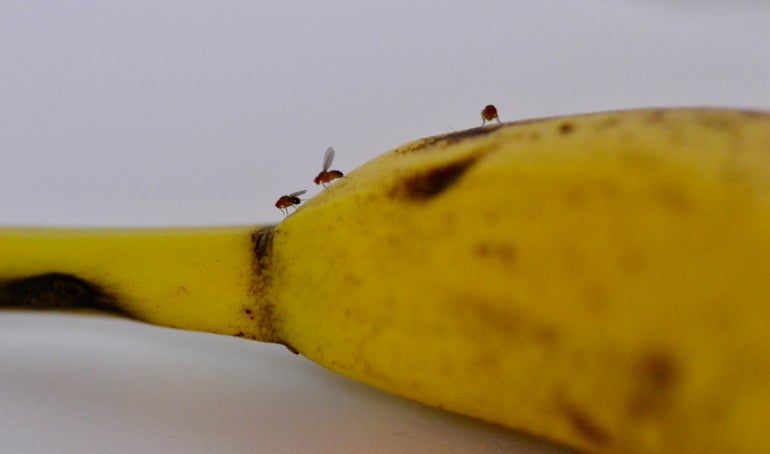
Of course, you don’t want any bugs in your home. When it comes to fruit flies, though, it can seem impossible to keep them out! One day your kitchen is fine, and the next day, those insidious little pests are everywhere. What can you do? We’ve got some tips for getting rid of fruit flies.
- First, know what causes them, so you can take preventive measures. Fruit flies like ripe, rotting, decayed produce, especially fruit, as you might guess from their name. They’re also attracted to fermented goods like beer and wine, and can also live in trash cans and garbage disposals. Because female fruit flies lay 500 eggs at a time, those eggs hatch in about 24 hours, and the flies live two to four weeks, they’re nearly impossible to control. To prevent them from infesting your kitchen:
- Throw out produce that’s too ripe.
- Keep your fruits and vegetables in the refrigerator.
- Wash produce promptly to remove potential fruit fly larvae or eggs.
- Take out the garbage frequently.
- Clean all spills quickly, particularly fruit juice or alcohol.
- If they’ve already established themselves in your kitchen, you need to know what to do about fruit flies. Some people might think that pouring bleach down the drain will kill them, but in fact, it won’t be sufficient. Bleach might kill some larvae, but it passes through the drain too quickly to make a significant impact.
- A simple vinegar fruit fly trap can be extremely effective. Here’s the basic principle: make a trap with apple cider as the lure. The flies will enter the trap to get the apple cider vinegar but won’t be able to escape. The type of trap can vary in a few ways.
- Pour some apple cider vinegar into a bottle or glass. Cover with plastic wrap and poke some holes in the plastic to allow them to enter.
- Put some vinegar and a chunk of overripe fruit into a jar. Roll a piece of paper into a funnel and place it into the mouth of the jar.
- Set out a bowl of vinegar and add a few drops of dish soap. The flies will be attracted to the vinegar, and the soap decreases the water’s surface tension, so they won’t be able to escape.
- Beer and wine work well as bait, too. Leave a stale bottle of beer open on the counter, for instance, and the fruit flies won’t be able to resist it. Add a few drops of soap to the beer and you’ve got yourself a trap.
- When all else fails, consider commercial products. Fruit flies are so universal that there are tons of products on the market to help you get them under control. If you’re not having success with homemade traps, consider purchasing an insect trap or some eco-friendly fruit fly control spray.
Any time you’re storing things, make sure they’re clean and free of any insects before you bring them to the storage facility. Pouch Self Storage has been operating mini-storage facilities since 1979 and is committed to keeping our clients’ belongings safe. Founded by John Yelland, who hails from Australia, Pouch Self Storage is named in honor of the kangaroo’s pouch- nature’s safe and secure storage spot. We’re an industry leader in design, building, and maintenance of self-storage facilities, and we strive to give our occupants the most advanced security systems available. At our nine Southern California facilities, you’ll find state-of-the-art computer monitoring systems that allow our self-storage managers to monitor the opening and closing of every storage unit door, 24 hours a day. Currently, we’re abiding by CDC recommendations and implementing social distancing, but you can still reach us by calling (800) 378-4598 or contacting us through our website.
Sustainable Ways to Get Rid of Old Clothes
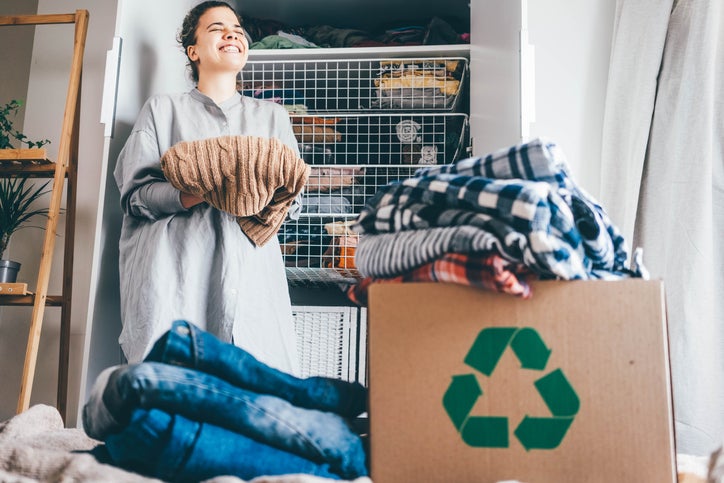
Did you know that, on average, Americans throw away about 81 pounds of clothing each year? If that seems like an astonishing statistic, here’s another one for you: most Americans don’t wear about 82% of what’s in their wardrobes. Why are we putting so much clothing into the landfills? Better yet, what are some more sustainable ways to dispose of unwanted clothing?
- Donate it. This is, obviously, everyone’s first thought. Unfortunately, much of the clothing people donate each year still winds up in the landfill. There’s so much donated clothing every year that many retailers can’t keep up with it. Often, it ends up being sent overseas, where it’s shredded and repurposed, or thrown away. That being the case, there are some great places to donate clothing, including nonprofits, schools, churches, or mutual aid groups. Call around to see who can use what you need to discard. You can also look into online groups like freecycle, where you may be able to find people to take the clothing you no longer want.
- Sell it. Consignment stores are good places to sell clothes that are in good shape, but they aren’t the only option. There are also secondhand clothing apps and sites like Poshmark and Thredup, where you can send your unwanted duds to be sold. Of course, there’s also eBay if you’re interested in managing the listings yourself.
- Recycle it. Did you know that many articles of clothing can be recycled? Fabric from worn out clothing can be shredded and used for insulation, furniture stuffing, and many other purposes. Look for textile recycling programs in your area.
- Repurpose it. There are tons of creative ideas for ways to use clothing that’s not nice enough to donate or sell. Some of your old clothing will make great cleaning rags, other items will make a perfect rag rug, or you could make a bag or stuff a pillow with clothing you no longer need.
- Swap it. Clothing swaps can be a fun way to bond with people you know and get some new clothes at no cost. Host a swap party: invite your most fashionable friends, set out some snacks, and start swapping!
- Compost it. Natural fabrics like cotton, linen, hemp, wool, bamboo, silk, and ramie are all biodegradable and can be composted. Make sure they’re not blended with anything like polyester, take out non-compostable parts like zippers and buttons, shred them thinly, and they’ll be perfect for your compost pile. Keep the ratio right, limiting your clothing to 25 percent or less of your composting.
If you need to store some old clothing while you determine the best thing to do with it, we’ve got you covered. Pouch Self Storage has been operating mini-storage facilities since 1979 and is committed to keeping our clients’ belongings safe. Founded by John Yelland, who hails from Australia, Pouch Self Storage is named in honor of the kangaroo’s pouch- nature’s safe and secure storage spot. We’re an industry leader in design, building, and maintenance of self-storage facilities, and we strive to give our occupants the most advanced security systems available. At our nine Southern California facilities, you’ll find state-of-the-art computer monitoring systems that allow our self-storage managers to monitor the opening and closing of every storage unit door, 24 hours a day. Currently, we’re abiding by CDC recommendations and implementing social distancing, but you can still reach us by calling (800) 378-4598 or contacting us through our website.
